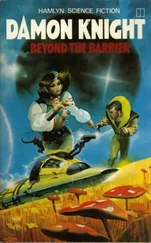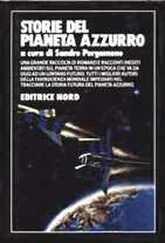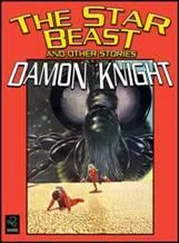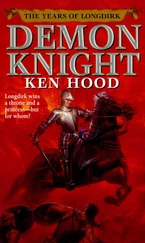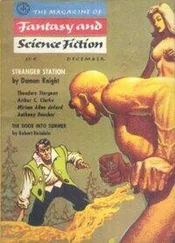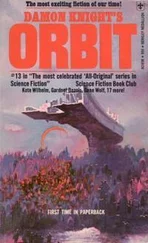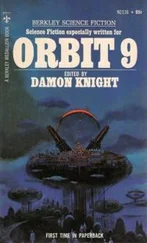Damon Knight - Orbit 19
Здесь есть возможность читать онлайн «Damon Knight - Orbit 19» весь текст электронной книги совершенно бесплатно (целиком полную версию без сокращений). В некоторых случаях можно слушать аудио, скачать через торрент в формате fb2 и присутствует краткое содержание. Год выпуска: 1977, ISBN: 1977, Издательство: Harper & Row, Жанр: Фантастика и фэнтези, на английском языке. Описание произведения, (предисловие) а так же отзывы посетителей доступны на портале библиотеки ЛибКат.
- Название:Orbit 19
- Автор:
- Издательство:Harper & Row
- Жанр:
- Год:1977
- ISBN:0060124318
- Рейтинг книги:5 / 5. Голосов: 1
-
Избранное:Добавить в избранное
- Отзывы:
-
Ваша оценка:
- 100
- 1
- 2
- 3
- 4
- 5
Orbit 19: краткое содержание, описание и аннотация
Предлагаем к чтению аннотацию, описание, краткое содержание или предисловие (зависит от того, что написал сам автор книги «Orbit 19»). Если вы не нашли необходимую информацию о книге — напишите в комментариях, мы постараемся отыскать её.
Orbit 19 — читать онлайн бесплатно полную книгу (весь текст) целиком
Ниже представлен текст книги, разбитый по страницам. Система сохранения места последней прочитанной страницы, позволяет с удобством читать онлайн бесплатно книгу «Orbit 19», без необходимости каждый раз заново искать на чём Вы остановились. Поставьте закладку, и сможете в любой момент перейти на страницу, на которой закончили чтение.
Интервал:
Закладка:
“You like to sketch, I see.”
Dieter responded a trifle too eagerly. “Yes, M. Kinchon, that’s what I concentrated on at Sorbonne Complex.”
“Mm-hm. That’s good, Dieter. Allow me to say that there are not many here so proficient as you.” He smiled, eye-corners crinkling in a flattering way. “ In this area. I see you have some transfer reproductions here also. Forgive me, I know my representatives have been over this all with you before. Ah, how much console experience have you had?”
“Three months, M. Kinchon, intensive exercise in console operation and technique. However, as I told your interviewer, these transfers were made from imagined console projections, not actual beaded images. I felt—”
Kinchon held up a hand. “No need to explain—that is simply all the more impressive.” He stood up and walked over to one of the consoles. “But please, I wish to show you something.” As Dieter stood up next to him, Kinchon activated the screen. “The particular advantages of beaded images.”
Even before Kinchon switched to holoproject, Dieter realized that he could make no sense of the image he was looking at. It seemed to be a corniced blackness, scuffed with gray dust, with a stark angular shadow thrusting out of the bead field. But the angles and the depth were all wrong—or all right—or simply incomprehensible. Dieter finally looked helplessly at Kinchon, who grinned, twisting his thick silver wristband.
“You see, this is something you could not imagine, because you can’t even identify it. I’ll tell you. I sent someone to San Francisco last week to bead the shoe of an aged alcoholic in the old Halladie Plaza on Market Street. The unfortunate man was subsequently arrested, and this is the view from just under the back seat of the police vehicle. With a boosted light level, of course.”
Dieter whistled, amazed that the man would attempt a transfer from an image containing so little real information.
“Good, good, you see it. My point is that here at the Dwalae we deal with a certain effect, different from anything the other plastic arts can produce. Of course, this effect is determined by the technology, but the selection of materials and the craft of the transferist do play their part. At any rate, it is the final product that matters, and the transfer, removed by bead and console from its subject, allows appreciation by many more people than do the older forms.”
“Much less subjective,” Dieter offered.
“Ah, yes.” Kinchon strode back to the desk and pressed a button.
“Yes, K?”
“Call everyone in for a moment.” He sat down again. “Dieter, I want you to meet my other artists. They are good people, though given at times to excess, eh?” He laughed. The door opened, and five people walked in.
“Persons! This is M. J. Dieter of Sorbonne Complex. He is joining us, our good fortune, as his talents are most considerable.”
Kinchon gestured toward a short man with steel-gray hair who nodded curtly but did not extend his hand. “Maximus.”
“Dwight.” Neither the clipped smile nor the gold brocade tunic impressed Dieter.
A gaunt creature shook his hand limply, leaving a scent of fermenting orchids. “Mm. Silva.”
“Bryon you’ve met already.” The receptionist grinned, sagging slightly with a bend of his knee.
“Finally, M. C.”
“Excuse me?” Dieter felt distinctly uncomfortable.
“C,” C said. “I prefer it to Carruthers, wouldn’t you?” He was sullenly British.
“Back to your projects now, children,” Kinchon said, waving them away. Dieter thought he heard someone—was it C?—mumble “Good luck,” but he did not count upon the sincerity of this wish. Already the names were fading away, and Dieter was not sure it was worth the effort to keep them in mind.
Kinchon smiled. “They are quite a group, are they not?” He put a heavy hand on Dieter’s shoulder, kneaded his neck muscles, a massage that was at once immensely relaxing and a new source of tension. “We want you here, Dieter. Go back to Bryon and he’ll show you to your console. Just tell him what materials you’ll need—he’s quite efficient. Make good use of them and you’ll succeed, eh?”
“Yes. Yes, I will. Thank you very much, M. Kinchon.”
“Please.” The massage ended. “My artists call me K.” Dieter nodded, mumbling thanks, then left Kinchon’s room.
Just as Kinchon had promised, Bryon directed him (much more cordially) back to a small cubicle that was to be his work area. It was spartan, but complete. In a corner were his console, an older and smaller unit than Kinchon’s, and his chair. Beside them stood his plotting easel, and across from that a large worktable equipped with storage bins. After Bryon left, Dieter tilted several of them open and was pleased to find the bins filled with fresh materials. Finally, satisfied with his working environment, Dieter sat in the contour chair and activated the image.
Since his first assignment was more a test than a real project, a subject had been beaded for him. A single fact sheet informed him that the subject lived in the maintenance compound outside the Condo Dome, and that a fabric-textured bead had been placed on the right sleeve of a work jumpsuit, just above the front part of the hem. The uniform was short-sleeved, so that the bead hung just below the subject’s biceps, a position almost impossible to detect, given the quality of beads used by the Workshop. This particular model was a transparent disk that had even been successfully textured to blend with bare human skin.
At any rate, the bead provided an image of exceptional clarity. Dieter sat back and watched. According to the fact sheet, the subject was a waste cycler working a four-hour afternoon shift, so his mornings would usually be spent in his room in the compound. That room, in fact, was on screen now. By making a few exploratory sketches and comparing them to the screen display, Dieter was able to determine that the subject was sitting on a mattress in the corner of the room with his back against the wall, facing a brown wooden door. The subject read a book propped against his thighs, and he periodically brought a cigarette to his mouth by a slow bending of his long forearm.
It was interesting enough, but there was not much material for a transfer. Dieter thought about the theory of art he had often expounded to friends at Sorbonne Complex: that the purpose of art was to make the unnoticed noticeable in such a way as to reveal to the viewer the defects in his own perceptions. As he tried to make something out of the flat screen image, Dieter wondered whether his own perceptions were defective. But the fact that he was sitting in a console chair as an employee of the Dwalae Workshop made it an easy thought to dismiss.
Shortly before noon (and an hour after he had become bored, despite his desire to perform well) the image on the screen tilted crazily and grew larger as the subject rose to open the door. Then the image resumed its former angle while a visitor, a young red-haired woman, pulled a chair away from the wall. Hoping for additional information, Dieter activated audio. The woman sat down, petted the cat she had carried in (how perfect, Dieter thought, hands through fur), and asked the subject how long his beard had been growing. She called him Coe.
The conversation was not very interesting, although Dieter was amused by Coe’s blunt efforts to resist what was plainly an attempt to initiate a sexual liaison. Eventually, she gave up; then Coe put on a jacket, blacking the image out for nearly forty-five minutes. It resumed inside the metal-gray confines of the cycling plant. That was a subject Dieter had no wish to deal with, so he spent the remainder of the afternoon experimenting with the console, making occasional prints whenever a partial view of Coe’s face appeared.
Читать дальшеИнтервал:
Закладка:
Похожие книги на «Orbit 19»
Представляем Вашему вниманию похожие книги на «Orbit 19» списком для выбора. Мы отобрали схожую по названию и смыслу литературу в надежде предоставить читателям больше вариантов отыскать новые, интересные, ещё непрочитанные произведения.
Обсуждение, отзывы о книге «Orbit 19» и просто собственные мнения читателей. Оставьте ваши комментарии, напишите, что Вы думаете о произведении, его смысле или главных героях. Укажите что конкретно понравилось, а что нет, и почему Вы так считаете.


